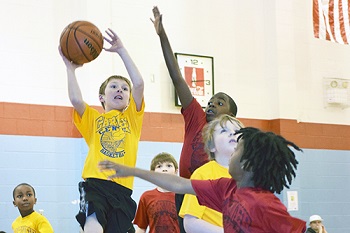When Should Athletes Undergo A Physical Examination

It is recommended that children involved in athletics should undergo physical evaluation before participating in sports, even at a young age.
High school athletes in the state of Indiana must undergo a pre-participation physical evaluation (PPE) before they are allowed to attend tryouts for an athletic team. The Indiana High School Athletic Association (IHSAA) requires the athletes to have an evaluation form filled out by a licensed physician, nurse practitioner, or physician assistant and submitted to the school before the student is eligible for participation. This has been a longstanding regulation for student-athletes although the requirements for the physicals have changed over the years. The IHSAA adopted a new PPE form in 2016, which looks deeper at the athlete’s health. The PPE is broken into two separate but important sections, medical history and physical examination.
Many area schools require middle school students to undergo the same qualifications for PPE in order to participate on a school-sponsored team, but there are other organizations that do not require young children to undergo a PPE prior to participation in the sport.
“There are no hard-and-fast guidelines so that is why you don’t see them written in stone,” said Dr. Mary Apiafi, MD, who specializes in physical medicine, rehabilitation, and sports medicine at Community Howard Regional Health. “There are many kids nationwide that participate in sports. Each state has their own (rules), but in terms of a hard rule, nationwide there’s no hard-and-fast guideline that you’ll see. Once you are participating in sports, it is recommended that you have a pre-participation physical done.”
The general PPE takes a look at the athlete’s and their family’s medical history. Dr. Apiafi said as part of the physical assessment, screening for cardiovascular risk factors is a big part of the evaluation.
According to the IHSAA, approximately 500 deaths are attributed to sudden cardiac arrest in athletes in the United States annually, and it can strike even those in peak physical shape. The fact sheet provided through the organization’s website states that it can affect all levels, all sports, and all age levels and that many sudden cardiac events are caused by inherited heart defects, but sudden cardiac events also can occur after a direct blow to the chest or an inflammation caused by illness. Undergoing a PPE prior to participating in athletics can help identify potential risk factors.
“The point of a pre-participation physical is so you can identify and pick up anything that will predispose them to injury or if they have any preexisting condition that you can actually pick up,” said Dr. Apiafi. “Screening for cardiovascular risk factors, that’s a big part of it. What we know is folks with increased cardiovascular risk factors, we need to work them up more prior to participation in physical exercise.”
Dr. Apiafi stresses to her patients that overall nutrition is very important and that those just beginning a sport should ease into it, especially if they have not participated in athletics or physical activity for as many years as their peers.
“You don’t want to ramp up pretty fast. That is setting you up for injury,” she said. “When there is a change in a training routine, folks tend to come in with more injuries. Athletes starting out for the first time, pace yourself. Condition. Get stronger. Make sure you have good flexibility. Don’t try to keep up with the guys who have been doing it longer than you have. Pace yourself, and you’ll get there, hopefully without injury.”
Once the young athletes are participating in the events, taking care of their body and keeping it free of injury are the next steps to remaining healthy on the field of play.
“A couple of things I always stress with my athletes and parent is overall nutrition, especially in female athletes and in long-distance runners. Any abnormalities in menstrual cycles should throw up a red flag,” said Dr. Apiafi. “Obviously, you’ll have bumps and bruises, but in the young, signs to look for (an issue) could be limping. They may not complain. If you see their gait is altered, that is a sign something is wrong. Swelling, redness, things like that will give an indicator that something should be looked at. Bumps and bruises are OK, but any nagging, lingering pain should be checked out.”
Story Credit: http://kokomoherald.com/Content/Social/Social/Article/When-should-athletes-undergo-a-physical-examination/-2/-2/32285


